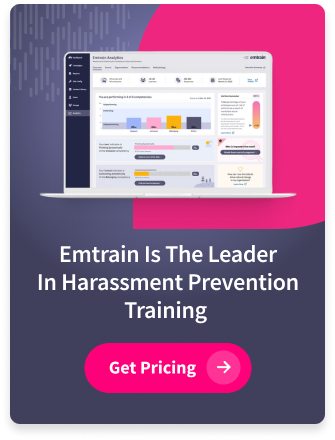Welcome back to ‘Check the Drama at the Door,’ our ongoing series about preventing workplace conflict through best managerial practices and a series of measures that should be taken to promote a healthy culture. Over the past few weeks, I have been identifying potentially “triggering” events or issues and turning points at which companies may be able to take proactive steps to avoid strife, boost employee productivity and loyalty and, one hopes, make their businesses employers of choice. If you missed the last couple of posts, check out Part 1 and Part 2, which cover establishing culture, organizational changes, and communication improvement.
My experience as an independent workplace investigator has given me a bird’s eye view of workplace conflict as it unfolds, and I have been able to spot a few patterns. One pattern is that there always seems to be a singular point in time where the action could have been avoided. I have been posting a series of blog entries that address best practices for conflict prevention and resolution while identifying potentially triggering turning points. This is the third post of that series.
Step 5
One of the biggest mistakes management faces when addressing conflict is failing to address an issue when it is still minor, or being too slow to act.“Being too slow to act” usually involves putting your head in the sand and losing precious time hoping an issue will go away. Sometimes it means having an undue commitment to “sunk costs”—trying to recover an investment by holding onto it because you cannot accept that it is no longer working. Sunk costs mean focusing on past costs rather than future utility. Sunk costs involve backwards-looking decisions, often caused by a fear of wasting (resources, effort, or energy); a desire to prove that we are right (giving up on a sunk cost may seem to prove we made a mistake); a failure to anticipate the positive opportunities that might follow once we abandon a sunk cost; and being overly concerned about how others will view us if we give up a sunk cost. True leadership will be not only about successes, but about your capacity to recover from setbacks.
A couple of triggering situations might be:
- A bad hire;
- Or having launched a new project or program, or having opened a new location.
How can these triggers cause conflict? A bad hire can change team dynamics (causing others to have to pick up the slack, making other team members resentful that the wrong person was hired, etc.) or potentially derail an employee’s career if he or she is put on an assignment that is a loser. (That team member will eventually object to the damage done to his or her career.)
Thankfully, these roadblocks can be avoided, and if spotted in time, removed altogether:
Recognize the need to act quickly and decisively (distinguish between a decision that is bad, versus a decision that is worse). You might have spent a great deal of political capital advocating for a decision and your instinct may be to continue to fight for that position, even after you know it’s the wrong one. If the need to change, retreat, retract is obvious, accept the loss and stop wasting even more time and resources.
- Identify the fix and implement a plan to execute the fix—quickly.
- Learn from the mistake. For example, if you made a bad hire and you realize it’s because you based your decision solely on “gut” and emotion (“I like this person …”), it’s time to create a more methodical and effective recruitment and hiring protocol for future hires. Or, go back to see how you made a particular decision (to launch a new product, for example) and see if you engaged in decision-making bias: Did you only look at evidence that supported your decision to move forward with the plan? How can you do better next time?
- For recruitment, it makes sense to hire employees who have the skills to do the specific job, but who also understand and are on board with larger issues. For example, it is a recipe for disaster to hire a person to work in a start-up company or operation who clearly needs lots of direction and structure. (Similarly, if your company is very structured, make sure an applicant knows this and can assess whether this environment is right for him or her.) It is also important to not only explain company values, but to make sure all hiring managers can provide applicants with an understanding of what the business does—and instill commitment and excitement from applicants about the business.
- Take responsibility for mistakes—others will respect you for it. Let go of ego and embrace discomfort when it comes to acknowledging and learning from mistakes.
We at Emtrain hope these tips serve you well. Be sure to check in regularly as Patti Perez discusses the importance of training, the effective use of HR tools and technology, the role of investigations in resolving workplace conduct, and how to transform tensions into opportunities.








